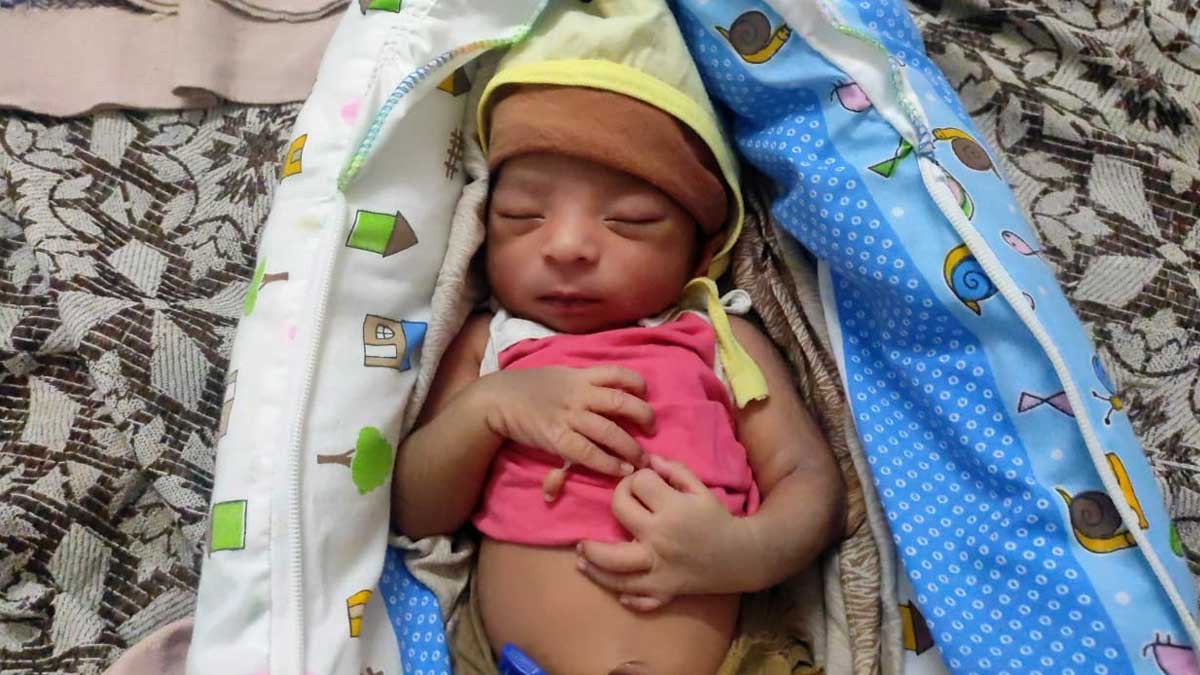
On Sunday, a baby boy was born with 24 fingers, six on each hand and leg, at the Korutla government hospital in Telangana. Media reports went on to say that the parents, Sungarapu Sagar and Ravali, of Yergatla village in Nizamabad's Kammaripally mandal, married two years ago. Ravali was rushed to Metpally Government Hospital after having labour pains, but due to a shortage of doctors, she was transferred to Korutla Government Hospital, where she gave birth to the baby boy via natural delivery.
Table of Content:-
Doctors at the Korutla government hospital were astonished after observing the baby boy born with an uncommon ailment. Instead of the standard 20 fingers and toes, this baby has 24 fingers, six on each hand and foot. According to the specialists, it is an extraordinarily rare occurrence in medical history. This condition is called Polydactyly. Let’s know more about this rare genetic mutation.
What Exactly Is Polydactyly
Polydactyly, a condition characterised by having extra fingers or toes, has been a subject of fascination for centuries. While most humans are born with five digits on each hand and five toes on each foot, polydactyl newborns have more digits than the normal.
Dr Arvind Kumar, Director & Hod, Paediatrics, Fortis Hospital, Shalimar Bagh, said that polydactyly may run in families. Most children are otherwise healthy, but in some, it may be a part of a syndrome, and then it is known as syndromic polydactyly. Children with syndromic polydactyly have other birth defects.

Research indicates that polydactyly can result from genetic mutations that affect limb development during embryogenesis(developmental process of foetus). Studies have identified several genes that are associated with polydactyly, including the Sonic Hedgehog (SHH) signaling pathway, which plays a crucial role in formation of fingers. Mutations in the SHH gene or other genes involved in limb development can disturb the delicate process of digit patterning, leading to the formation of extra fingers or toes. Further research has also revealed that polydactyly can have a familial pattern, with a higher likelihood of occurrence in families with a history of the condition.
Types Of Polydactyly
Polydactyly has been studied in various populations and is found to occur in different forms.
Preaxial polydactyly
It is characterised by the presence of an extra digit on the thumb side of the hand or the big toe side of the foot.
Postaxial polydactyly
It involves the presence of an extra digit on the little finger side of the hand or the little toe side of the foot.

Frontiers in genetics has shown that these different forms of polydactyly may have distinct genetic causes, indicating the complex genetic basis of this condition.
Are There Any Functional Benefits Of Having Extra Fingers
The study by the University of Freiburg in Germany published in the journal Nature Communications reveals that people with polydactyly have more movement dexterity than those with fewer fingers.
Polydactyly has also been studied from an evolutionary perspective. Some researchers propose that polydactyly could have evolutionary advantages, as the presence of extra digits may enhance grasping ability or locomotion in certain environments. For example, studies on animals such as cats, horses, and birds have shown that polydactyly can confer functional benefits in specific contexts.
Diagnosis Of Polydactyly

Sometimes this extra finger is also visible in pre-natal ultrasound. But it is not completely visible. This can be confirmed by post natal check up. X-rays may be used to confirm an extra bone. It may help parents to know how the presence of extra finger is attached to the hand.
Treatment
As per Dr Arvind, polydactyly is usually treated by removing the extra digit from the child's hand and foot. This is usually an outpatient surgery, and the process does not hurt the child's other fingers and toes.
“The surgery for removing one extra finger is usually done when a child is 1 and 2 years old. At this age, they are young so as not to miss any milestones but old enough to better tolerate anesthesia and surgery,” Dr Arvind added.
Since polydactyly is linked to certain environmental factors ,to prevent it from occurring, avoid alcohol, smoking, and tobacco consumption during pregnancy.
Also watch this video
How we keep this article up to date:
We work with experts and keep a close eye on the latest in health and wellness. Whenever there is a new research or helpful information, we update our articles with accurate and useful advice.
Current Version